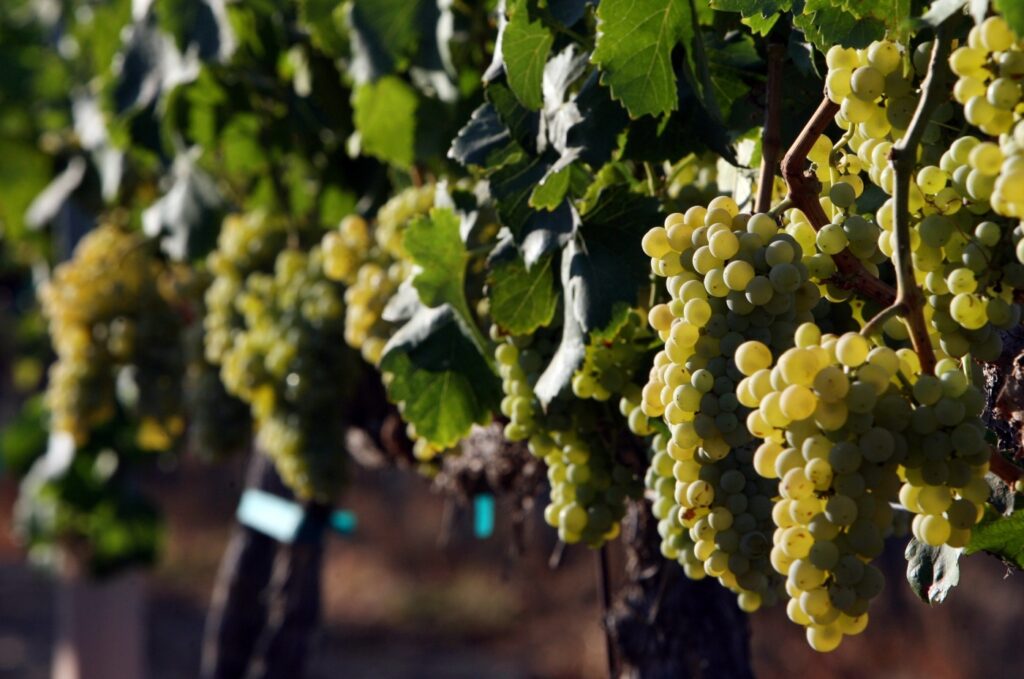
Q: I am an amateur gardener who is trying to grow grapes. I planted two vines. One was flourishing and the other was not looking as good. Now they both look nearly dead. It doesn’t help that I had to leave their care in someone else’s hands for a week.
My main questions are: What are they supposed to look like in our winter? I live in Santa Clarita. Are my vines dead or just going dormant? How much should I be watering them now? I was watering twice per week with about 1.5-2 gallons water. This is the first winter I’ve had the vines.
A: Grapes are deciduous, so they will look dead in the winter even if they’re still alive. If you bend a branch and it doesn’t snap, the plant is still alive. If it snaps, that particular branch is dead, but the main vine may still be alive. Wait until spring to see if buds appear.
Dormant vines won’t take much water, but they shouldn’t be left to dry out completely. Winter rain should supply enough water, but a modest amount of water may be needed if there’s no rain. The vines should not sit in water or mud for any extended period of time.
Q: I was unaware the majority of the plants covering my hillside, which I thought were great for hillside stabilization, are actually invasive. Would it be advisable to remove them (mostly ice plants and ivy) and replant native species instead? Would removing invasive ones cause erosion to my hillside, and would new plants survive given the old invasive plant roots may regrow and perhaps overtake the new native varieties?
A: When replanting a hillside for stabilization, I would recommend removing a few plants at a time so the new plants have time to establish. Removing the old roots should help the new plants establish faster, so it’s worth the trouble.
Q: You mentioned killing slugs with ammonia water. I looked it up and was not able to find it mentioned for pest control. Do you make this? It doesn’t seem safe around pets. Can you elaborate on it a little?
A: Sure! When hand-picking snails (or slugs), the standard advice is to drop them into a container of salt water. We used to do this, but then we ended up with a can full of dead snails and thick, slimy salt water. We didn’t want to pour it into the compost bin, and we couldn’t pour it out around any of our plants due to the high salt concentration.
When we clean, we pour the dirty ammonia water onto one of our trees, since diluted ammonia is a good fertilizer. We decided to try using ammonia that was not as diluted when we did our next snail collection. It worked like a charm! All we did was add more water, then dump the can into the compost bin. It’s not accessible to our pets and safe for the plants.
Have questions? Email gardening@scng.com.
Looking for more gardening tips? Here’s how to contact the Master Gardener program in your area.
Los Angeles County
mglosangeleshelpline@ucdavis.edu; 626-586-1988; http://celosangeles.ucanr.edu/UC_Master_Gardener_Program/
Orange County
ucceocmghotline@ucanr.edu; 949-809-9760; http://mgorange.ucanr.edu/
Riverside County
anrmgriverside@ucanr.edu; 951-683-6491 ext. 231; https://ucanr.edu/sites/RiversideMG/
San Bernardino County
mgsanbern@ucanr.edu; 909-387-2182; http://mgsb.ucanr.edu/
Related Articles
3 invasive plant species you’ll want to keep out of your garden
How to protect your trees from gusty winds
How this highly irregular species has thrived in Southern California
Diagnosing why an avocado tree’s fruit is shaped like small hot dogs
This edible plant almost went extinct 500 years ago. Now it grows well everywhere
